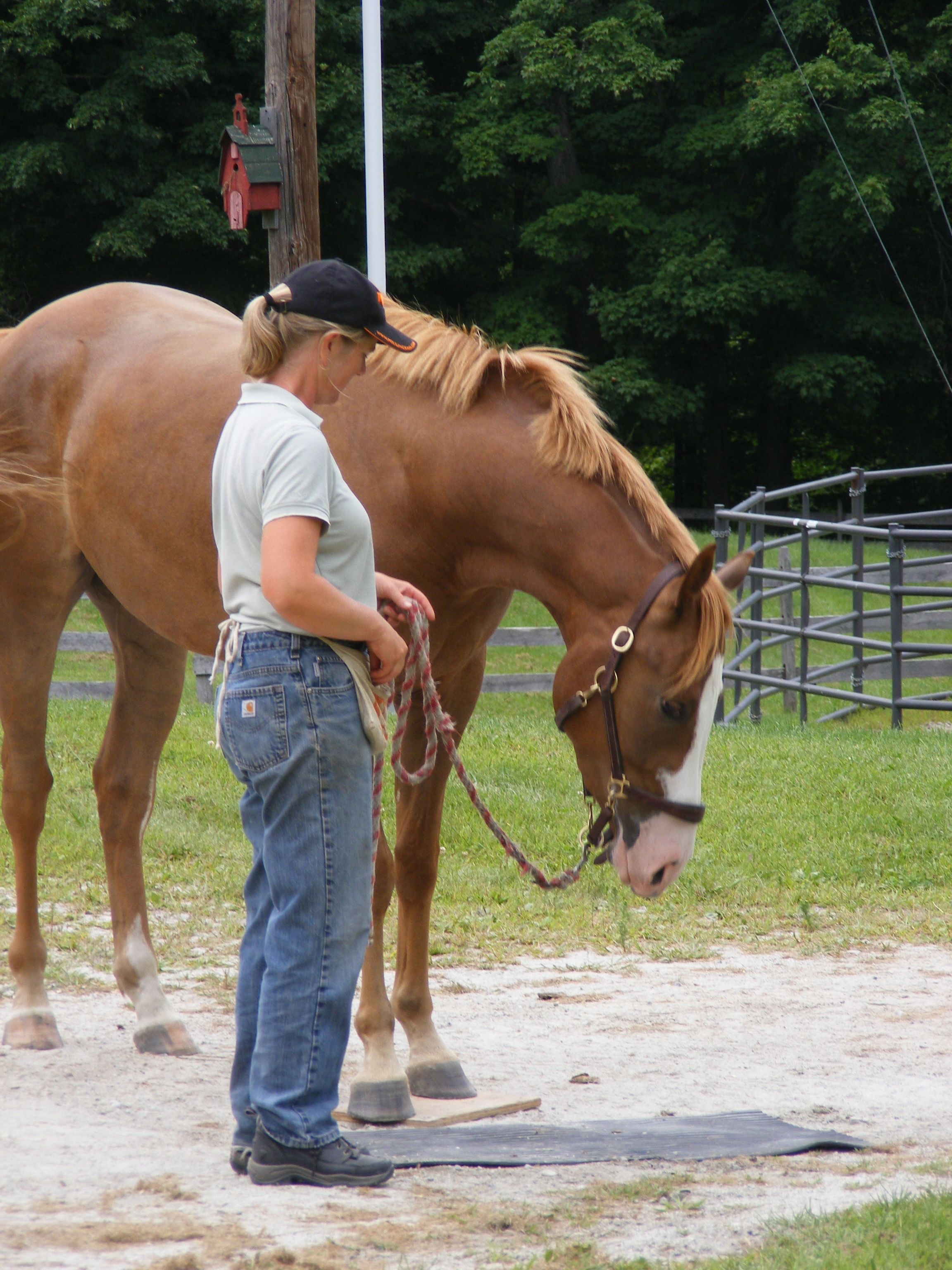Bookends Farm
Force free training for allLessons, Clicker Training and
Problem Solving for Horses in
the Northeast Kingdom of VT
What is Positive Reinforcement?
Positive reinforcement is a bit of a buzz phrase these days as it becomes more and more popular due to the success of the method. Horse trainers, dog trainers, zoos, aquariums, pet owners and teachers of humans are all jumping on the positive reinforcement bandwagon.
While it seems negative to do so, first I will tell you what positive reinforcement is not:
- it’s not pressure and release
- it’s not empty praise
- it’s not bribery
- it’s not a sign that you’ll need to feed your horse forever to get him to do anything.
Positive reinforcement is a process based on behavioral science. The teacher or trainer breaks a skill down into small parts- this requires strong observation and a knowledge of the skill being taught. Each step is reinforced with a bridge signal (a “click” or a “tag”) which means YES, that is correct. The science about how that signal works so powerfully includes studies of the brain and emotion. The learner, whether animal or human, simply knows that that the process feels good and they want to repeat the behavior. A happy student can learn much more efficiently than a stressed one. The reason that bridge signal has any meaning at all to animals is because we pair it with a primary reinforcer- usually food. The click comes to mean a treat is coming and so the animal works to earn that click. If it were bribery, the food would be held out and the animal would be focused on the food, rather than the task. Instead, the animal has to think and reason about what will earn the click with no guarantee that the click is coming until he figures out the correct next step. Once you begin clicker training, it is easy to see the difference (an example are the many people, myself included, who have stood for hours on a trailer ramp with a bucket of grain trying to entice a horse inside. Clicker training is a much faster process and because it is true training, the horse remembers and walks willingly on the next time. He also does not retain any negative emotions which might be associated if pressure is used to get him on).
We use the term TAGteach when we work with humans. The difference with people, of course, is that we have language in order to explain the next step, or tag point. That common language can make it more difficult, however, because we try to explain too much and our learner gets confused with all the words. So it’s important to break those skills down and reinforce each step of the way to make it clear and successful. The marker signal works the same way as for animals- a clear distinct sound which means YES- not yes, but. Just yes. The “tagulators” pictured above are the way we keep track of how many tags are learned during a lesson.
Some learners do not need a primary reinforcer paired with the sound. If they are trying to learn a desired skill (a sport or a life skill), then their success is sufficient. Sometimes it helps to have an additional reinforcer for difficult or unpleasant tasks- here at Bookends Farm, we use stickers, small toys or permission to do a fun activity!
Unfortunately there are those who claim to use positive reinforcement but don’t really understand it. If you are looking for a trainer or instructor, keep these words in mind so you find someone truly devoted to using positive reinforcement only. The method is sadly diminished when combined with punishment, since the animal or learner does not really know whether to try for a reinforcer or if he will be punished for guessing wrong.

Bookends Farm Blog
- Introducing Enrichment
- Using Enrichment Toys to Train a Call to Barn
- Giving Instead of Taking- How to Deal with Destructive Behaviors
- Pony of the Month- A Training Plan for Too Many Horses
- Grazing Tuesdays- Managing Horse Pasture
- Anyone Else Experiencing Trigger Stacking?
- When Classical Conditioning Accidentally Goes Operant
- The Launch of Bookends Farm Academy
- Preview 30 days of Husbandry
- Training Motivation in a Wintry World

